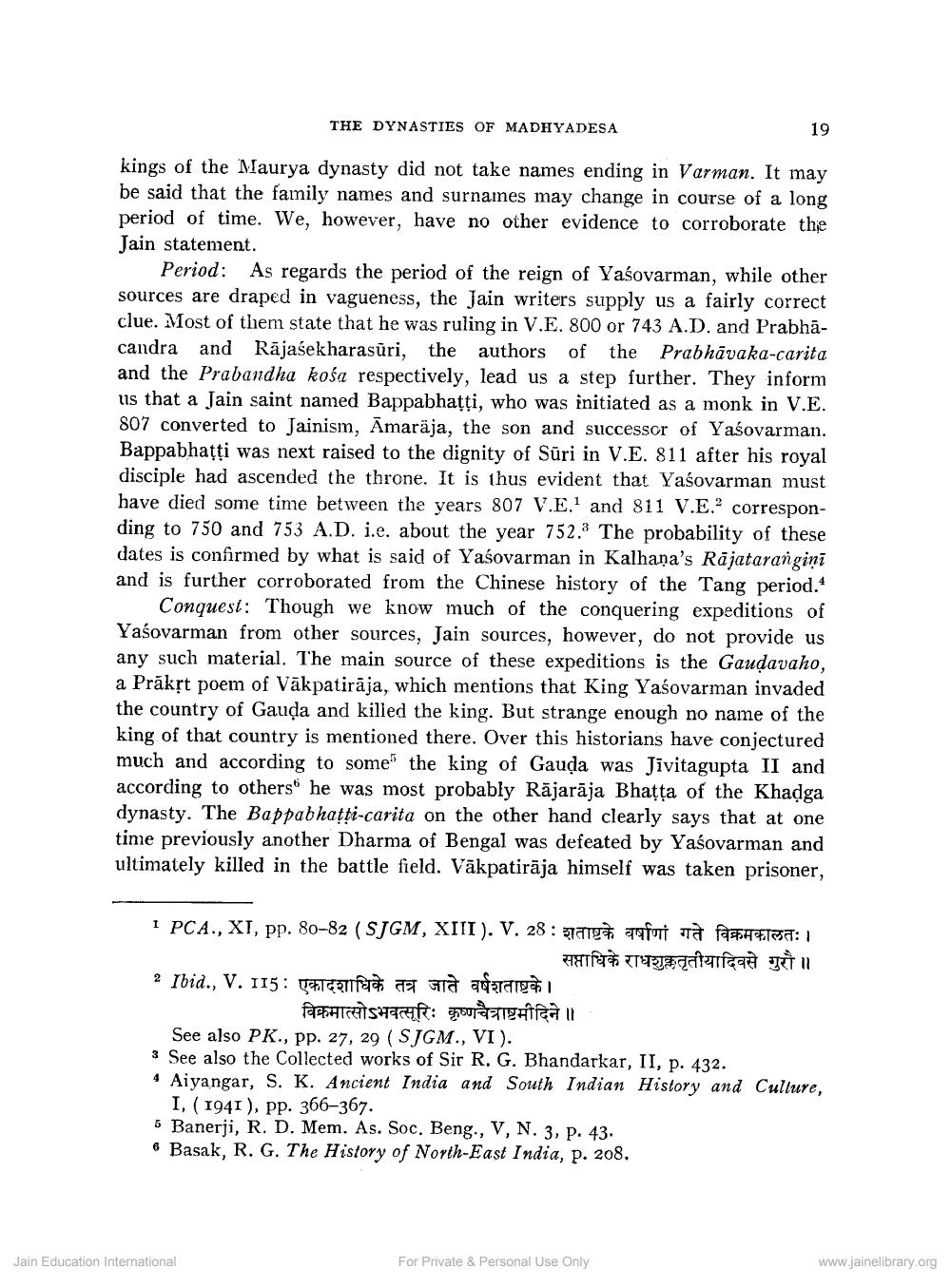________________
THE DYNASTIES OF MADHYADESA
kings of the Maurya dynasty did not take names ending in Varman. It may be said that the family names and surnames may change in course of a long period of time. We, however, have no other evidence to corroborate the Jain statement.
Period: As regards the period of the reign of Yasovarman, while other sources are draped in vagueness, the Jain writers supply us a fairly correct clue. Most of them state that he was ruling in V.E. 800 or 743 A.D. and Prabhācandra and Rajasekharasūri, the authors of the Prabhavaka-carita and the Prabandha koša respectively, lead us a step further. They inform us that a Jain saint named Bappabhatti, who was initiated as a monk in V.E. 807 converted to Jainism, Amaräja, the son and successor of Yašovarman. Bappabhatti was next raised to the dignity of Suri in V.E. 811 after his royal disciple had ascended the throne. It is thus evident that Yašovarman must have died some time between the years 807 V.E. and 811 V.E." corresponding to 750 and 753 A.D. i.e. about the year 752. The probability of these dates is confirmed by what is said of Yašovarman in Kalhana's Rajatarangini and is further corroborated from the Chinese history of the Tang period." Conquest: Though we know much of the conquering expeditions of Yašovarman from other sources, Jain sources, however, do not provide us any such material. The main source of these expeditions is the Gauḍavaho, a Präkṛt poem of Väkpatiräja, which mentions that King Yašovarman invaded the country of Gauda and killed the king. But strange enough no name of the king of that country is mentioned there. Over this historians have conjectured much and according to some" the king of Gauda was Jivitagupta II and according to others he was most probably Rājarāja Bhatta of the Khadga dynasty. The Bappabhatti-carita on the other hand clearly says that at one time previously another Dharma of Bengal was defeated by Yašovarman and ultimately killed in the battle field. Väkpatiräja himself was taken prisoner,
1 PCA., XI, pp. 80-82 (SJGM, XIII). V. 28: gang fut à fammetea: 1 सप्ताधिके राधशुक्ल तृतीयादिवसे गुरौ ॥
• Ibid. V. 115 एकादशाधिके तत्र जाते वर्षशताष्टके । विक्रमात्सोऽभवत्सूरिः कृष्णचैत्राष्टमीदिने ॥
See also PK., pp. 27, 29 (SJGM., VI).
See also the Collected works of Sir R. G. Bhandarkar, II, p. 432.
Aiyangar, S. K. Ancient India and South Indian History and Culture,
I. (1941), pp. 366-367.
Banerji, R. D. Mem. As. Soc. Beng., V, N. 3, p. 43. Basak, R. G. The History of North-East India, p. 208.
19
Jain Education International
For Private & Personal Use Only
www.jainelibrary.org




